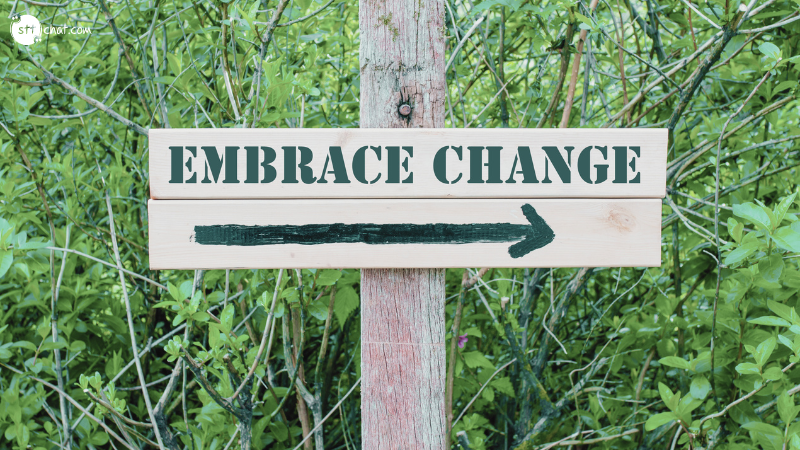Matthew Henry, an English clergyman and biblical scholar, is well-known for his profound commentary on the Bible. His quote, “After a storm comes a calm,” offers a timeless reminder of the cyclical nature of life’s challenges and the promise of peace following turmoil. This simple yet profound statement encourages resilience and hope, reassuring us that no matter how difficult a situation may seem, tranquility will eventually follow. In this blog, we will explore the layers of meaning behind this quote and discuss how it applies to various aspects of life, from personal growth to broader societal changes.
1. The Cyclical Nature of Life
1.1 Understanding Storms and Calms
In nature, storms are often followed by periods of calm. These storms, whether they are physical or metaphorical, represent challenges, disruptions, and chaos. They can take the form of personal struggles, global crises, or unexpected life changes. The calm that follows represents a return to normalcy, a time for healing, reflection, and growth.
This natural cycle mirrors the experiences we face in life. Just as the weather transitions from turbulent to tranquil, so too do the situations we encounter. Matthew Henry’s quote reminds us that difficult times are temporary and that peace will eventually follow even the most intense storms.
1.2 Embracing the Storms
While storms can be daunting, they often provide opportunities for growth and transformation. Just as nature uses storms to clear away the old and make way for the new, our personal storms can serve as catalysts for positive change. The challenges we face can push us to reevaluate our priorities, build resilience, and develop new strengths.
By embracing the storms in our lives, we learn to navigate uncertainty with grace and courage. This perspective shift allows us to view challenges not as obstacles, but as opportunities for growth and development.
2. Applying “After a Storm Comes a Calm” in Personal Life
2.1 Personal Resilience and Growth
Matthew Henry’s quote serves as a powerful reminder of the importance of resilience in the face of adversity. When confronted with personal challenges, it’s easy to feel overwhelmed and defeated. However, recognizing that calm will eventually follow the storm can provide the strength and determination needed to persevere.
Consider someone going through a difficult period in their life, such as the loss of a loved one or a career setback. While the storm may feel all-consuming, it also presents an opportunity for healing and personal growth. By weathering the storm and emerging on the other side, individuals can develop resilience, gain new perspectives, and find a renewed sense of purpose.
2.2 Finding Peace After Turmoil
The calm that follows a storm provides a valuable opportunity for reflection and healing. It’s a time to process experiences, learn from them, and emerge stronger. By embracing this period of calm, individuals can gain clarity, rediscover their strengths, and set new goals.
For example, someone who has overcome a major health crisis may find that the calm period allows them to reevaluate their priorities, focus on self-care, and pursue new passions. This newfound sense of peace can lead to a more fulfilling and balanced life.

The calm that follows a storm provides a valuable opportunity for reflection and healing. Source: Internet
3. The Broader Implications of Matthew Henry’s Wisdom
3.1 Societal Challenges and Resilience
Matthew Henry’s quote is not only applicable to personal experiences but also to broader societal challenges. History is replete with examples of societies that have endured tumultuous periods and emerged stronger and more resilient.
Consider the aftermath of global conflicts or economic recessions. While these events create widespread disruption and uncertainty, they are often followed by periods of recovery, innovation, and growth. Societies that weather these storms with resilience and adaptability can emerge with renewed strength and a deeper understanding of their values.
3.2 Embracing Change and Transformation
In the context of societal challenges, the calm that follows a storm can serve as a powerful catalyst for positive change and transformation. It provides an opportunity to address systemic issues, implement new solutions, and build a more equitable and sustainable future.
For example, the COVID-19 pandemic has presented unprecedented challenges but has also highlighted the importance of global cooperation, innovation in healthcare, and the need for more resilient systems. As the world moves toward recovery, there is an opportunity to embrace positive change and create a better future for all.
4. Navigating Life’s Storms with Hope and Courage
4.1 Overcoming Fear and Uncertainty
One of the greatest barriers to finding calm after a storm is fear and uncertainty. The unknown can be intimidating, and the challenges we face can seem insurmountable. However, Matthew Henry’s quote encourages us to overcome these fears by reminding us that peace will eventually follow the turmoil.
Embracing this mindset requires cultivating hope and courage. By focusing on the potential for growth and transformation, we can navigate life’s storms with greater confidence and resilience. This shift in perspective allows us to approach challenges with a sense of optimism and determination.
4.2 Practical Strategies for Finding Calm
Acknowledge and Accept: Recognize that storms are a natural part of life and that it’s okay to experience difficulty. Acceptance is the first step toward finding calm.
Stay Grounded: Focus on the present moment and find ways to ground yourself amidst chaos. Mindfulness practices, such as meditation or deep breathing, can help you remain centered and calm.
Seek Support: Reach out to friends, family, or support networks for guidance and encouragement. Connecting with others can provide a sense of community and help you navigate challenges.
Reflect and Learn: After the storm has passed, take time to reflect on the experience and identify the lessons learned. This reflection can provide valuable insights and contribute to personal growth.
- Embrace Change: Use the calm period as an opportunity to embrace change and set new goals. This mindset shift allows you to focus on the positive potential of transformation.

Use the calm period as an opportunity to embrace change and set new goals: Source: Internet
5. Lessons from History and Modern Times
5.1 Historical Examples
Throughout history, individuals and societies have demonstrated remarkable resilience in the face of storms. One such example is the post-World War II era, during which many countries experienced significant rebuilding and growth. Despite the devastation of war, nations came together to rebuild, innovate, and create a more interconnected world.
Similarly, the civil rights movement in the United States exemplifies the power of resilience and transformation. Despite facing significant challenges and opposition, the movement ultimately led to greater equality and justice for marginalized communities.
5.2 Modern Applications
In today’s rapidly changing world, Matthew Henry’s quote remains highly relevant. From personal challenges to global crises, the ability to find calm after a storm is crucial for navigating life’s complexities. By embracing resilience, adaptability, and hope, we can emerge stronger and more capable of creating positive change.
Conclusion
Matthew Henry’s quote, “After a storm comes a calm,” serves as a timeless reminder of the cyclical nature of life’s challenges and the promise of peace that follows turmoil. By embracing this wisdom, we learn to navigate uncertainty with resilience and hope, recognizing that even the most intense storms are temporary.
In both personal and societal contexts, the ability to find calm after a storm is essential for growth and transformation. By overcoming fear, embracing change, and focusing on the potential for positive outcomes, we can weather life’s storms with courage and confidence, emerging stronger and more capable of creating a brighter future.






